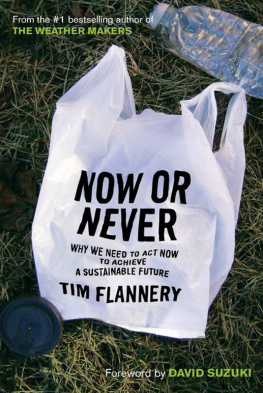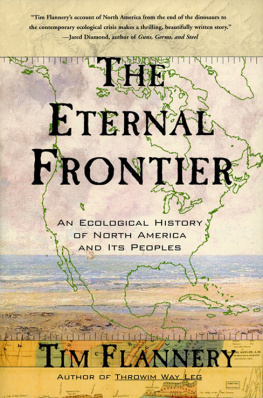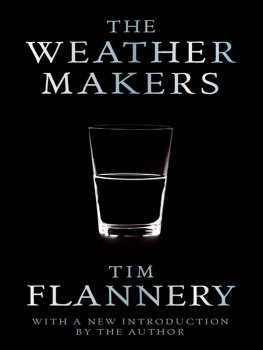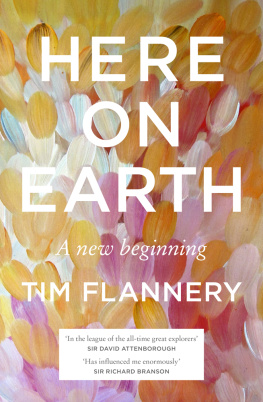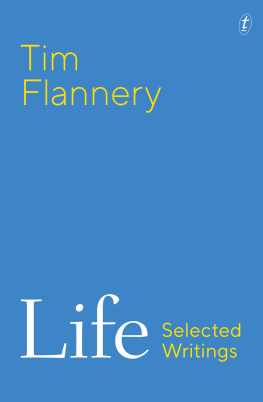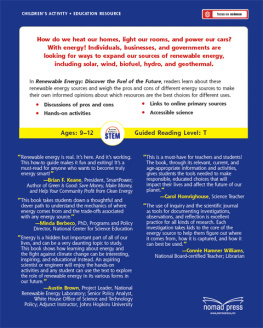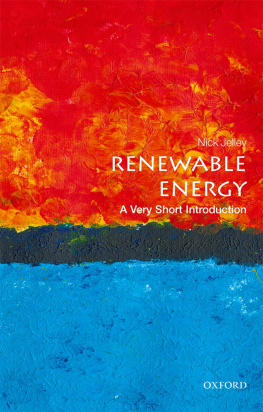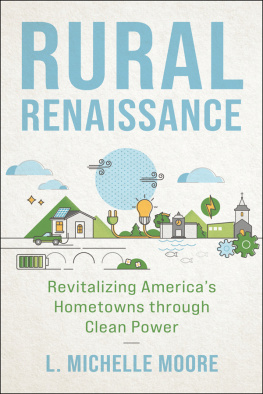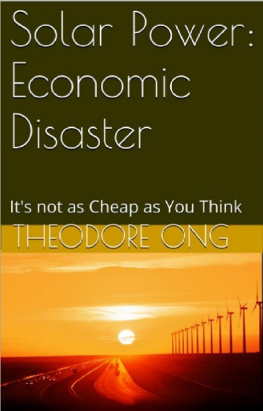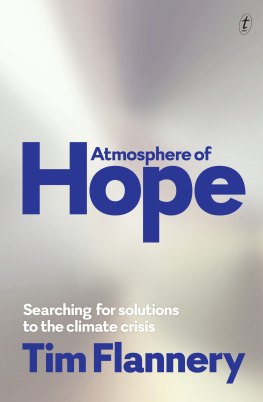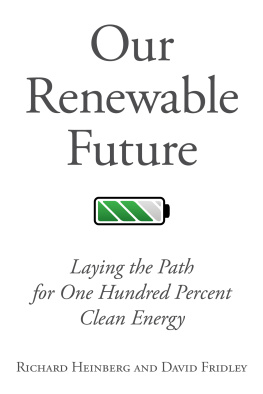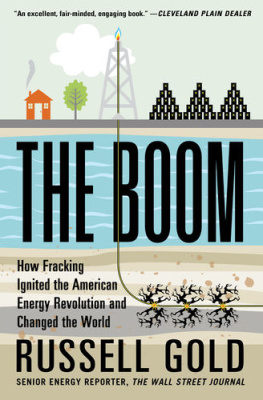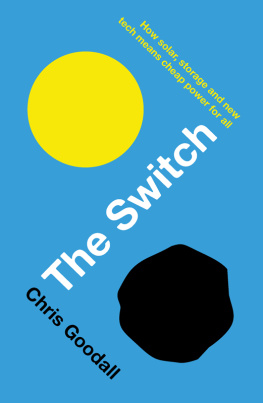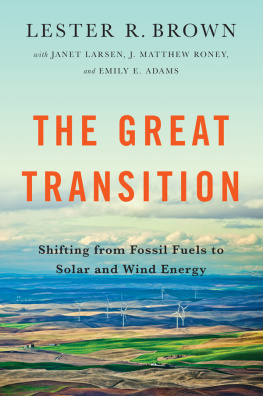
Contents
To three of my inspirations,
CH, KH and MM
There is no doubt that humanity is nearing a crisis point. Old ways of doing things, from growing food to providing energy and manufacturing the countless things we feel we need, have proved to be so damaging to human health and the environment that within a few decades they must be no more. Entirely new methods of providing lifes essentials must be devised to take their place. And, indeed, those alternatives are beginning to take shape. But will they arrive in time? In a nutshell, thatalong with the pressing need to revitalise our democraciesis our challenge.
Some believe that by living simple livesgrowing our food at home, generating electricity from solar panels on our rooftops, and living with less in terms of material goodswe will be able to live sustainably in future. There are doubtless great virtues in simple living, but the worlds population stands at 7.4 billion and is rapidly growing. Billions are only now attaining modest affluence, and soon will aspire keenly to the lifestyles of those in the richest nations. I believe that even with the best intentions, unless new technologies capable of providing lifes essentials cleanly and cheaply arrive soon, we cannot live sustainably. In fact, the situation is worse than that, because without new technologies and new ways of doing things, we will not be able to deal with the climate crisis and the land, air and sea pollution that so afflicts our world.
Some believe that we already have the technologies we need to do this, and looking at the rapidity with which solar panels are colonising the worlds rooftops, it is indeed easy to be misled into believing that the clean technology revolution is well As important a breakthrough as it was, solar PV is best thought of as just the earliest development in a highly complex energy revolution that will unfold over decades and will end, perhaps, by transforming our species into a new breed of alchemists, capable of satisfying our needs out of little more than sunlight and thin air. In this context, the spread of solar PV is analogous to the spread of Alexander Graham Bells telephone: ultimately, telephone wires would enable the internet. But for most of the time that land-line telephones have been in existence, nobody was thinking about them in relation to the next big step.
The three objectives of feeding, powering and cleaning up the world may seem to have little in common, and it may seem to be overly ambitious to suggest solutions to these enormous problems in a book as brief as this. But I am not attempting to present complete solutions here. Instead, what I want to do is to point out common solutions, which already exist in embryo, and which have the potential to underpin the achievement of all three of these essential prerequisites for a sustainable future.
Much of my recent writing spelled out a message of hope for the future. It is clear to me that even with the climate crisis assuming its current frightening proportions, and with billions more people on our finite planet, that life in 2050 can be much better than it is today, and the state of our biodiversity and ecosystems much improved. But as I have watched recent developments I have realised hope is not enough. We also need a coherent vision of the future that is capable of guiding investments in clean technologies so that hope can be turned into concrete reality. This book outlines the possible roles that multi-potent solutions can play in addressing humanitys greatest environmental challenges. But in order to examine potential solutions and how they might work, the full scale and nature of our sustainability crisis must be understood.
The Paris Agreement on climate change, which the actions required, remain formidable.
But even these climate-related challenges, as large as they are, are not the only sustainability issues that require urgent attention. By 2050 there will be about 9 billion people sharing our finite planet. Despite some progress, the challenge of limiting population growth remains. And the task of simply feeding the ever-growing multitude is as difficult as any challenge faced by our species. Then there is the problem of cleaning up the innumerable pollutants, quite aside from CO2, that contaminate our air, water and soil, and which result from centuries of unsustainable mining, industry and agriculture. Cumulatively, these challenges are growing more daunting by the year. They are perhaps best summed up in WWFs Living Planet report, which reveals that we are already using 50 per cent more resources than Earth can sustainably yield, and that as we do so, we are destroying Earths natural capital and so compromising our planets ability to provide the clean air, water, food and other ecosystem services that life depends upon.
will be looking back on forty years of accelerating climate impacts, and bracing ourselves for imminent runaway climate change. This, he anticipates, will finally force unified action to clean up our energy- and food-production systems. But the cost of the preceding inaction will be very high. Overcoming decades of inequality, tension and social strife will cause some nations to collapse. Longevity will not continue to increase as it has over recent generations and may even decline. For all but the wealthiest of the current elites living in the affluent west, a decline in living standards will be so precipitous that it will feel like a collapse.
Randers pathway to 2052 is a messy, muddle-through kind of route to the future that we should not wish on our children. And I feel certain that we can avoid it, in part through the swift deployment of new technologies. But that will take vision and leadership, and some luck.
This book focusses on two solutions that I think must be a big part of humanitys future if we are to avoid Randers 2052 vision. Neither one is a complete solution to every sustainability problem we face. Rather, they are fundamental building blocks towards solutions to multiple problems. Technologies or methods that solve more than one problem at once are required if we are to rise to the multiplicity of challenges facing us, as energy, food production and environmental remediation are interrelated and, indeed, synergistic undertakings. The first, known as Concentrated Solar Thermal (CST), is capable of delivering an energy trifectaelectricity, high-quality heat and energy storage, as well as clean water. CST will play a vital role in limiting greenhouse gas emissions, in growing food sustainably at a very large scale and in cleaning up polluted soils and waterpotentially all at the same time. The second, PV-powered mid-ocean kelp farming (PMKF)which strictly speaking is a method rather than a technology (although it does have unique technological dimensions)stands out for its enormous potential to capture and sequester carbon from the air and ocean, while yielding prodigious volumes of high-quality protein.
Armed with CST and PMKF, humanity will command cheap, clean power harnessed to the most efficient food-production systems yet devised, which, as they work, have the potential to clean up the environment on a massive scale. Of all the energy and food solutions to date, I argue that only CST and PMKF can deliver this. Although neither is entirely new, emerging developments promise to transform CST from a struggling field of energy generation into one of the most important technologies for humanitys future, as well as to kick-start PMKF at a massive scale. In short, I believe that we are moving into a solar-thermal, kelp-powered future. But will it come fast enough?
In 1968, Stanford Universitys Professor Paul Ehrlich and his wife Anne wrote one of the most influential and hotly debated books of the twentieth century.
Next page

